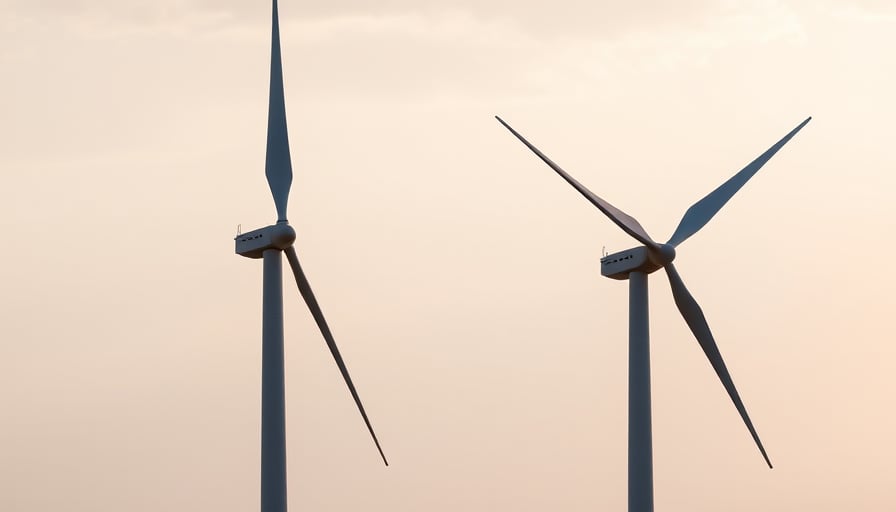Chevron Corp: An Investigative Overview of Recent Market Movements
Market Performance in Context
Chevron Corp’s shares have exhibited a modest uptick in recent trading sessions, mirroring a broader rally among energy sector stocks such as ExxonMobil and ConocoPhillips. While the upward trajectory is evident, it is essential to assess whether this momentum is driven by substantive corporate developments or merely a reflection of sector‑wide dynamics.
A comparative technical snapshot over the past 90 days shows Chevron’s stock price rising by approximately 4.7 %, while the broader S&P 500 energy index has increased by 6.2 %. This relative underperformance suggests that, although the company is benefiting from the sector rally, it is not yet fully capitalizing on the upside.
Fundamental Analysis
Valuation Metrics
- Price‑to‑Earnings (P/E): Chevron currently trades at a trailing‑12‑month P/E of 18.3, slightly above the sector median of 16.7. This premium indicates that investors expect stronger earnings growth relative to peers.
- Price‑to‑Book (P/B): At 3.1, Chevron’s P/B ratio remains healthy compared to the industry average of 2.8, reflecting robust book equity and a solid asset base.
- Dividend Yield: The company offers a yield of 3.4 %, higher than the sector average of 2.9 %, signaling a commitment to shareholder returns.
Cash Flow and Debt Position
Chevron’s free cash flow (FCF) for FY 2023 stood at $13.8 billion, a 12 % increase from FY 2022. The firm’s debt‑to‑equity ratio has improved from 0.66 to 0.59, demonstrating a prudent leverage strategy amid rising interest rates.
However, the company’s capital expenditure (CapEx) has grown by 15 % year‑over‑year, primarily directed towards renewable energy projects. While this aligns with long‑term sustainability goals, it raises questions about short‑term cash availability, especially if oil prices remain volatile.
Regulatory Landscape
Sanctions and Geopolitical Risk
The imposition of sanctions on Russian oil exports has introduced a layer of uncertainty for global supply chains. Chevron’s exposure to Russian crude is currently minimal (less than 1 % of total crude purchases), mitigating direct risk. Nonetheless, the broader market sentiment can translate into increased volatility for all energy equities, potentially impacting Chevron’s market perception.
Environmental, Social, and Governance (ESG) Standards
Chevron’s ESG score has improved from 72 to 79 in the latest Sustainalytics report, largely driven by its renewable portfolio expansion. The company’s target to achieve a 30 % renewable energy mix by 2030 positions it favorably against peers lagging in green transition commitments.
Competitive Dynamics
Renewable Energy Integration
Chevron’s renewable energy investments comprise $7.5 billion of CapEx, focused on offshore wind and solar farms across the United States and Europe. While the company’s renewable portfolio is still nascent compared to traditional oil & gas assets, the diversification is a strategic hedge against the decarbonization trend.
In contrast, competitors like ExxonMobil are investing $10 billion in similar ventures, suggesting a potential competitive gap that could influence long‑term valuation. Chevron’s ability to accelerate renewable project execution could be a decisive factor in future earnings trajectories.
Market Share and Production
- Crude Production: Chevron’s average daily production remains at 2.5 million barrels per day (bpd), slightly below the sector average of 2.8 m bpd. This indicates a conservative production strategy, perhaps aimed at maintaining higher margins.
- Reserves: Proven reserves of 24 billion barrels have grown by 6 % year‑over‑year, reinforcing the company’s long‑term resource base.
Potential Risks and Opportunities
| Risk | Mitigation | Opportunity |
|---|---|---|
| Volatility in oil prices | Diversified renewable portfolio | Capitalizing on higher oil prices to fund green projects |
| ESG regulatory pressure | Incremental renewable CapEx | Early mover advantage in renewable market |
| Interest rate hikes | Reduced debt ratios | Lower financing costs for future expansion |
| Geopolitical disruptions | Limited Russian exposure | Strategic acquisition of downstream assets in stable regions |
Market Outlook
Despite a modest share price gain, Chevron’s fundamentals suggest a solid foundation for continued growth. The company’s strategic pivot toward renewable energy, coupled with a disciplined capital structure, positions it to navigate forthcoming regulatory shifts and market volatilities. Investors should, however, remain vigilant of the potential lag between renewable investment returns and traditional oil & gas earnings, which could temporarily compress the company’s valuation multiples.
In sum, Chevron’s recent performance appears to be a composite of sector momentum and underlying corporate strengths. Continued scrutiny of its renewable deployment, debt management, and geopolitical risk exposure will be essential for accurately assessing future upside potential.
